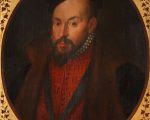
John Dudley is a fascinating Tudor man, but how much do you know about him? Test your knowledge with this fun quiz. Good luck!
[Read More...]
John Dudley is a fascinating Tudor man, but how much do you know about him? Test your knowledge with this fun quiz. Good luck!
[Read More...]
Happy New Year! This month in Tudor Life Magazine, we have a bumper edition which is 94 pages long. It’s all about the Marys who made up the Tudor world…
[Read More...]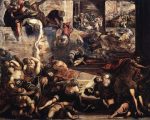
Today is Childermas or the Feast of the Holy Innocents, a day that is still important in the Catholic Church and which was one of the Twelve Days of Christmas in Tudor times. Let me tell you about it in today’s Claire Chats video talk.
[Read More...]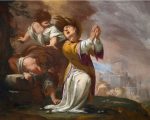
In the UK today, 26th December is known as Boxing day and has become the day for spending your Christmas money at the post-Christmas sales or going for a bracing walk. We don’t think of it as the Feast of St Stephen.
But in Tudor times, it commemorated the martyrdom of St Stephen, who was stoned to death for blasphemy.
[Read More...]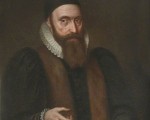
24th December:
1545 – King Henry VIII made his final speech to Parliament. Historian Robert Hutchinson describes it as “both measured and compelling”, and writes of how Henry wanted “to impart a stern message” to all of his subjects.
1604 – Death of Sir Thomas Cornwallis, Comptroller of the household of Mary I and member of Parliament, at the age of eighty-six. He was buried at Brome in Suffolk. Cornwallis was active in putting down Kett’s Rebellion in 1549 and in 1553, after originally proclaiming Lady Jane Grey as Queen in Ipswich, he swapped sides and swore allegiance to Mary I.

As this is our last quiz before Christmas, I thought I’d include some Christmas trivia questions and also some questions about Tudor events that happened around Christmas. So, grab your favourite Christmas tipple and a mince pie (or a slice of Christmas cake) and have a bit of fun with this quiz. Good luck!
[Read More...]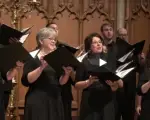
Christmas just isn’t Christmas for me without listening to traditional Christmas carols, although I do like a bit of Michael Bublé! In today’s Claire Chats I talk about Christmas carols and their history.
[Read More...]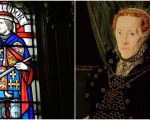
I just thought I’d highlight two “on this day in history” events for you today and give you links to read more about them:
[Read More...]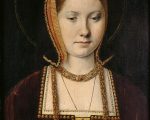
Thank you to Lynne for asking this question about Michael (Michel) Sittow’s portrait of a woman said to be Catherine of Aragon. The portrait of Katherine of Aragon painted by Michael Sittow on her marriage to Arthur shows Katherine with a halo around her headdress, and I read that the halo was painted on at a later date. I always thought that it was part of Katherine’s headdress, am I wrong?”
The painting by Michael Sittow, shown here, is beautiful. We don’t actually know for certain who it is and there has been controversy surrounding it in recent years because the Kunsthistorisches Museum in Vienna relabelled the portrait as being of Mary Tudor, sister of Henry VIII, based on “Henry VIII’s Favourite Sister? Michel Sittow’s Portrait of a Lady in Vienna”, an article by Paul G. Matthews. You can read more about this in Katherine of Aragon or Mary Tudor? – The Re-identification of Michel Sittow’s Portrait of a Young Woman by Nasim Tadghighi. For me, it makes more sense that it is Catherine.
[Read More...]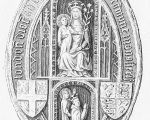
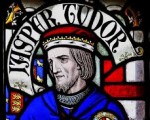
17th December:
1538 – Pope Paul III announced the excommunication of Henry VIII.
1550 – Birth of Henry Cavendish, soldier, traveller and son of Bess of Hardwick and Sir William Cavendish. He was married to Grace Talbot, daughter of George Talbot, 6th Earl of Shrewsbury. This match was arranged by his mother who had married the Earl of Shrewsbury.
1559 – Matthew Parker was consecrated as Elizabeth I’s Archbishop of Canterbury. According to “The Correspondence of Matthew Parker”, Anne Boleyn charged him with the care of Elizabeth when she saw him in April 1536, “not six days before her apprehension”. Historian Eric Ives writes that this was a request that Parker never forgot, and something which stayed with him for ever. Parker obviously came to be important to Elizabeth, because she made him her Archbishop of Canterbury in 1559. It was a post which Parker admitted to Lord Burghley, he would not have accepted if he “had not been so much bound to the mother”. Parker was Archbishop until his death in 1575.

Our Sunday puzzler this week is a fun wordsearch. How much do you know about British Christmas traditions? Lots, if you listened to Claire’s talk on Friday! Test yourself with this wordsearch. Be warned, the words can go in any direction!
[Read More...]

Our family’s Christmas is now a real mix of British and Spanish traditions, with an Icelandic tradition thrown in for good measure! In today’s Claire Chats video talk, I look at the popular Christmas traditions of the UK, and I’d love it if you could tell me about your country’s traditions, or those that are personal to your family.
[Read More...]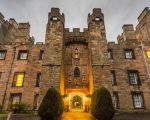
I’ve just received this news regarding Lumley Castle, a 14th-century castle, now hotel, in County Durham, in the North of England. Here’s the press release:
The legend surrounding a 630-year-old North East castle is to be brought vividly to life, giving amateur detectives the chance to solve a mystery in a UK first.
Lumley Castle Hotel, near Chester-le-Street, County Durham, has announced plans to create the country’s first escape room within a historic property. The 73-room castle has joined forces with the highly acclaimed Escape Rooms Durham, which already runs two games within the city centre, Mr Borrowdale’s Study and Lab Heist. And the organisation has created a unique new escape room challenge, based on the tragic story of Lily of Lumley, who, in the 14th century, was reputedly thrown down a well by Catholic priests for renouncing her faith. Lily is said to haunt the castle and there have been many supposed sightings of her ghost over the years – but now everyone who visits Lumley will get the opportunity to come face to face with the tragic heroine.
[Read More...]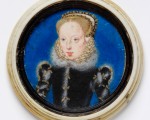
Lady Katherine Grey was born as the second surviving daughter of Henry Grey, 1st Duke of Suffolk, and his wife, Frances Brandon, Duchess of Suffolk. Born at Bradgate Park in Charnwood Forest, Leicestershire, Katherine was the offspring of an aspiring and preeminent Tudor family with ambitions at the royal court. Katherine’s maternal grandparents were Charles Brandon, 1st Duke of Suffolk, and Mary Tudor, the youngest surviving sister of King Henry VIII; this gave Katherine, and her two siblings, Jane and Mary, a claim to the English throne through their grandmother. Known popularly as the younger sister of Lady Jane Grey, the tragic young queen who was sentenced to death by the Catholic Queen Mary I, Katherine has become a fashionable topic of discussion in the academic and popular history world. Historians such as Leanda de Lisle have revaluated her life to reveal an equally as resilient and tragic figure to her sister Jane; indeed, Lady Katherine’s short life witnessed a number of tumultuous and unexpected events. This article intends to put forward a condensed examination of her life, which will include: her marriage, imprisonment, claim to the throne and downfall.
[Read More...]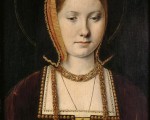
10th December:
1541 – Thomas Culpeper, Gentleman of the Privy Chamber, and Francis Dereham, a member of Queen Catherine Howard’s household, were executed at Tyburn. Culpeper and Dereham were tried on 1st December 1541 at the Guildhall, and convicted of treason. Both were executed on 10th December 1541, but Culpeper was beheaded while Dereham had to face the brutal traitor’s death of being hanged, drawn and quartered. Culpeper was buried at St Sepulchre-without-Newgate (Holborn).
1591 – Executions of Edmund Gennings, Roman Catholic priest, and Swithin Wells, Roman Catholic, on a scaffold set up outside Wells’ house at Holborn. They were hanged, drawn and quartered for treason due to their Catholic faith and for celebrating the mass.

Everybody’s heard of the Pendle Witches, but historian Kate Cole feels there are far more interesting witches from Elizabethan and Stuart Essex. We hope you enjoy Kate’s fascinating talk.
[Read More...]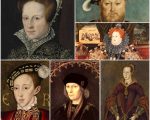
Every Sunday we have a bit of Tudor history fun. Sometimes it’s a crossword puzzle or wordsearch, and other times it’s a quiz. Today it’s quiz. So, grab yourself a snack and your favourite beverage, make yourself comfortable, and let’s get those little grey cells working!
Good luck!
[Read More...]
The December issue of Tudor Life Magazine which is produced by the Tudor Society and edited by historian and author Gareth Russell is a wonderful read. Its theme is the Cecil family, but it also has a Christmas section.
[Read More...]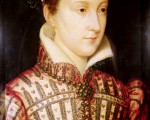
Today is the anniversary of the birth of Mary, Queen of Scots, on 8th December 1542. She was the daughter of James V of Scotland and his second wife, Marie de Guise, and the granddaughter of Margaret Tudor (Henry VIII’s sister) and James IV of Scotland.
One of the mottos associated with Mary, Queen of Scots, is “En ma Fin gît mon Commencement” , or “In my End is my Beginning”, and she is more famous for her brutal end at the hands of the axeman on 8th February 1587.
[Read More...]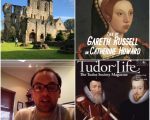
The open weekend kicked off brilliantly yesterday with lots of registrants visiting the site and diving into the archives. We hope you thoroughly enjoyed having a good look around.
Yesterday, we added our usual Friday video talk to the site. This week, Philippa Brewell, our raving reporter, gave us a virtual tour of the beautiful ruins of Wenlock Priory. It really is a stunning place.
[Read More...]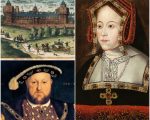
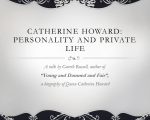
To celebrate our Tudor Society open weekend, we have a special bonus expert talk this month from historian Gareth Russell, author of “Young and Damned and Fair: The Life and Tragedy of Catherine Howard, Fifth Wife of King Henry VIII”.
[Read More...]
In this week’s Friday video talk, Philippa Lacey Brewell, the Tudor Society roving reporter, takes us around the beautiful ruins of Wenlock Priory in Much Wenlock, Shropshire.
[Read More...]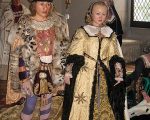
On Dec. 6, 1491, Anne of Brittany married Charles VIII, King of France, in a secret ceremony at Langeais in France’s Loire Valley. Both were betrothed to others. Rozsa Gaston is our expert speaker for February but she wanted to share a short radio interview that she recently did…
[Read More...]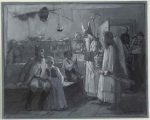
The 6th December was and is the feast of St Nicholas, or St Nicholas of Myra, the 4th century Bishop of Myra (modern-day Demre in Turkey), who is the patron saint of children, as well as sailors, merchants, archers, repentant thieves, brewers, pawnbrokers and students.
In medieval and Tudor times, it was traditional for a choirboy to be chosen on 6th December or Childermas (Holy Innocents’ Day) as “Boy Bishop” to act as bishop and to lead processions around communities, collecting money for the church and parish funds, and to lead some religious services.
[Read More...]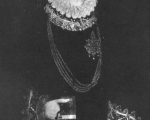
Anne Cooke was born the second daughter (and sixth child) of Anthony Cooke; noted tutor to King Edward VI. As the patriarch of the Cooke household, Anthony was renowned for his progressive attitude towards female education. Befitting his position, Cooke earned a distinguished reputation as England’s pre-eminent humanist scholar, alongside figures such as Sir Thomas More. Similarly, he chose to train his daughters in the same classical curriculum that he offered his four sons. (The family had four sons and five daughters) Contemporary academics, such as Dr Katherine Mair, argue that the Cooke sons have failed to remain relevant in twenty-first century historiography, in contrast to the impeccably educated Cooke daughters; women noted for their erudition and learnedness. Anne and her sisters excelled academically, in similarity to Thomas More’s daughter, Margaret, and shared a variety of scholarly interests. These included: Latin, Greek and translations. The women effectively violated the expected standards of sixteenth-century femininity by engaging in independent religious debate and writing. In terms of this article, it will intend to discuss several themes regarding Anne’s life, including her epistolary pursuits, religion, and general life.
[Read More...]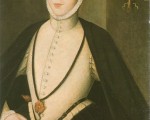
3rd December:
1536 – A proclamation was made to the rebels of the Pilgrimage of Grace offering them a pardon. The rebellion dispersed, but was followed by another rebellion, Bigod’s Rebellion, in early 1537. Click here to read more.
1577 – Death or burial of William Downham, Bishop of Chester and former
Chaplain of Elizabeth I before her accession. He was buried in the choir of Chester Cathedral.
1600 – Death of Roger North, 2nd Baron North, peer and politician in Elizabeth I’s reign, at his London home in Charterhouse Square. He was given a funeral service at St Paul’s, followed by a burial at Kirtling in Cambridgeshire. North was a friend of Robert Dudley, Earl of Leicester, and served Elizabeth I as Privy Councillor and Treasurer of the Household.